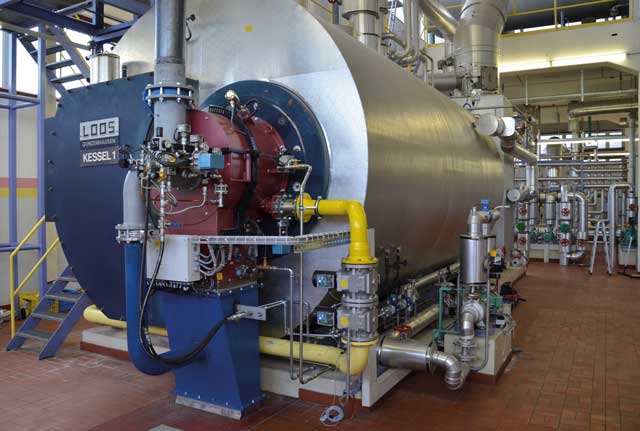
As combustion applications become more complex, the demands on burner management controllers increase. Mick Barstow, Lamtec export business development manager, describes the company’s latest development.
Modern burner management systems need to be flexible, scalable and cost-effective. As combustion applications become more complex, the demands on burner management controllers increase. Low-NOx burner technology and the popularity of new fuels require burner management controllers to offer the flexibility to enable users to configure systems to meet contemporary application needs.
Burner management systems need to meet the stringent requirements of a number of worldwide statutory approval regimes. They need to be able to operate with different burner and furnace configurations, and a wide range of liquid and gaseous fuels, which sometimes vary in availability and quality and which are sometimes required to be burned simultaneously.
A burner management system performs several duties. The primary function is to make sure the burner starts up safely and reliably. During operation it is essential that any fault that could cause a hazardous situation is detected immediately and the burner shut down in a controlled and safe manner.
In the past, four channel outputs were enough to meet most burner applications. An output channel is defined as a hard-wired control output capable of positioning a servo motor or a variable speed drive for a motor, usually driving a fan but sometimes an oil pump.
For more complex burner systems it is not uncommon for there to be a requirement for six or seven channel outputs. Examples of these are:
- Secondary air fan (main combustion air)
- Secondary air damper
- Primary air damper
- Oil valve servo motor
- Gas valve servo motor
- Flue gas recirculation damper
- Burner sleeve
- Oil pump
- Atomising cup speed.
Modern electronic systems enable drives to be individually adjusted, allowing oxygen trim and CO Control to be applied, both of which can significantly improve efficiency, and reduce fuel use and associated emissions.
Lamtec’s new Combustion Management System is a contemporary modular burner manager that offers complete flexibility to meet almost all burner applications. For applications that cannot be addressed using standard configurations and parameterisation, the CMS offers the opportunity for experienced customers to freely programme non-safety-critical functions using CODESYS soft PLC IEC 61131-3 development software.
The heart of the CMS system is the MCC burner module: this is where the processors are located and has the inputs/outputs for the control of a basic burner. Additional modules are used to build the CMS into a full burner management system and include:
- TPS Modules – each controls one or two three-point step servomotors with potentiometer feedback
- VS Modules – allow control of 4-20mA devices with 4-20mA feedback – typically a variable speed drive, but could be pneumatic actuator. (TPS and VS modules can be combined to provide up to 10 channel drive outputs)
- SDI Modules – safety digital inputs (up to 60 inputs available)
- SDO Modules – safety digital output (up to 41 outputs available)
- SAI Modules – safety analog input (9 failsafe or 18 non-failsafe inputs available).
- VS Modules can be assigned for analog outputs
- Fieldbus – interfacing to a number of standard Fieldbus protocols including Profibus DP and ProfiNet. Modbus TCP is included as standard on the MCC.
There is a choice of interfaces from a low-cost keypad through to a number of high-resolution touchscreens.
When combined with Lamtec’s comprehensive range of flame scanners and in-situ zirconia oxygen and COe probes/analysers, the CMS provides a full combustion management solution that meets all relevant safety standards, addresses almost all combustion applications and helps reduce fuel use, costs and emissions.
The CMS is compatible with existing Lamtec System Bus devices and is fully scalable, allowing additional functions such as VSD fan control, oxygen trim and CO control to be added as required.
The CMS complements the successful BT300 BurnerTronic range of burner management controllers, designed for smaller packaged burners, and brings Lamtec’s product range completely up-to-date.
www.lamtec.de | mick.barstow@lamtec.de
Tel: +44 (0)1732 445001 | Mob: +44 (0)7415 327038

